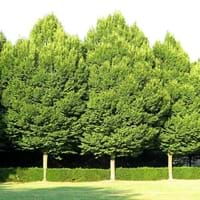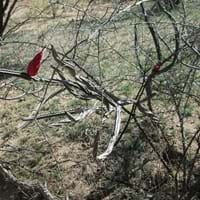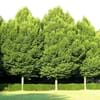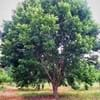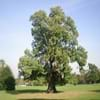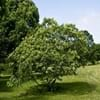Life Span
Perennial
Perennial
Type
Tree
Flowering Plants
Origin
Europe, Turkey
Mexico, Caribbean, Central America
Types
Not available
not available
Habitat
hedge rows, Woodlands
Desert
USDA Hardiness Zone
2-9
12-15
AHS Heat Zone
Not Available
12-10
Sunset Zone
Not Available
H2
Habit
Upright/Erect
Weeping
Flower Color
Yellow, Green, Orange Red
White, Ivory
Flower Color Modifier
Bicolor
Not Available
Fruit Color
Green
Non Fruiting Plant
Leaf Color in Spring
Light Green
Green, Dark Green
Leaf Color in Summer
Dark Green
Green, Dark Green
Leaf Color in Fall
Lemon yellow, Yellow green, Orange Red
Green, Dark Green
Leaf Color in Winter
Not Available
Olive, Dark Green
Leaf Shape
Ovate
Long and slender with very sharp edges
Plant Season
Summer, Fall, Winter
Summer
Sunlight
Full Sun, Partial Sun
Partial shade
The pH of Soil
Acidic, Neutral
Neutral, Alkaline
Soil Drainage
Average
Well drained
Bloom Time
Spring
Early Summer, Summer
Tolerances
Drought, Pollution, Variety of soil types
Drought
Where to Plant?
Ground
Container, Ground
How to Plant?
Grafting, Seedlings
Grafting, Seedlings, Transplanting
Plant Maintenance
Low
Medium
Watering Requirements
Average Water Needs, Do Not over Water, Keep the ground moist but not water-logged, Requires regular watering
Does not require lot of watering, Water once every two or three weeks, Water when soil is dry
In Summer
Lots of watering
Lots of watering
In Spring
Moderate
Moderate
In Winter
Average Water
Average Water
Soil pH
Acidic, Neutral
Neutral, Alkaline
Soil Drainage Capacity
Average
Well drained
Sun Exposure
Full Sun, Partial Sun
Partial shade
Pruning
Cut or pinch the stems, Remove damaged leaves, Remove dead branches, Remove dead leaves
Remove damaged leaves, Remove dead branches, Remove dead leaves
Fertilizers
All-Purpose Liquid Fertilizer, Nitrogen, Water soluble fertilizers
All-Purpose Liquid Fertilizer
Pests and Diseases
Aphids, Caterpillars, Powdery mildew
Aphids, Mealybugs, Root rot, Scale, Viruses
Plant Tolerance
Drought, Pollution, Variety of soil types
Drought
Flowers
Insignificant
Showy
Flower Petal Number
Not Available
Semi-Double
Fragrant Leaf
Not Available
No
Foliage Texture
Medium
Bold
Foliage Sheen
Glossy
Not Available
Attracts
Birds, Not Available
Not Available
Allergy
Asthma, conjunctivitis, Pollen, Rhinitis
Not Available
Aesthetic Uses
Cottage Garden
Beautification
Beauty Benefits
Skin irritation, Stops hair loss
Not Available
Environmental Uses
Air purification, Shelter for wildlife
Air purification
Medicinal Uses
Cold, Cough, Diarrhea, Hair Loss, Headache, hemorrhoids, Rheumatism, Sore throat
Diabetes, Hangover
Part of Plant Used
Leaves
Flowers, Fruits, Leaves
Other Uses
Cosmetics, Used as Ornamental plant, Used for its medicinal properties
Employed in herbal medicine, Fine spines and trichomes are used as fiber for weaving, Used As Food
Used As Indoor Plant
No
No
Used As Outdoor Plant
Yes
Yes
Garden Design
Feature Plant, Shade Trees
Container, Hanging Basket, Houseplant, Tropical
Botanical Name
Carpinus betulus
Peniocereus greggii
Common Name
Common Hornbeam, European Hornbeam
Night Blooming Cereus, Reina de la noche, Arizona queen of the night
In Hindi
हानबीन
Night Blooming Cereus
In German
Hainbuche
Nachtblühende Cereus
In French
charme
Night Blooming Cereus
In Spanish
carpe
Reina de la noche
In Greek
γαύρος
Night Blooming Cereus
In Portuguese
choupo-branco
Night Blooming Cereus
In Polish
grab
Noc Blooming Cereus
In Latin
Item carpinus
Maria Maria Cereus
Phylum
Magnoliophyta
Magnoliophyta
Class
Magnoliopsida
Magnoliopsida
Order
Fagales
Caryophyllales
Family
Betulaceae
Cactaceae
Genus
Carpinus
Peniocereus
Clade
Angiosperms, Eudicots, Rosids
Angiosperms, Core eudicots, Eudicots
Tribe
Not Available
Pachycereeae
Subfamily
Coryloideae
Cactoideae
Properties of Hornbeam and Night Blooming Cereus
Wondering what are the properties of Hornbeam and Night Blooming Cereus? We provide you with everything About Hornbeam and Night Blooming Cereus. Hornbeam doesn't have thorns and Night Blooming Cereus doesn't have thorns. Also Hornbeam does not have fragrant flowers. Hornbeam has allergic reactions like Asthma, conjunctivitis, Pollen and Rhinitis and Night Blooming Cereus has allergic reactions like Asthma, conjunctivitis, Pollen and Rhinitis. Compare all the properties and characteristics of these two plants. Find out which of these plant can be used as indoor plant. If you are interested to decorate your house and garden, find out aesthetic uses, compare them and select the plant which will beautify your surrounding. Along with beautification, try comparing medicinal and edible uses of Hornbeam and Night Blooming Cereus and you can choose the plant having best and most benefits.
Season and Care of Hornbeam and Night Blooming Cereus
Season and care of Hornbeam and Night Blooming Cereus is important to know. While considering everything about Hornbeam and Night Blooming Cereus Care, growing season is an essential factor. Hornbeam season is Summer, Fall and Winter and Night Blooming Cereus season is Summer, Fall and Winter. The type of soil for Hornbeam is Loam and for Night Blooming Cereus is Sand while the PH of soil for Hornbeam is Acidic, Neutral and for Night Blooming Cereus is Neutral, Alkaline.
Hornbeam and Night Blooming Cereus Physical Information
Hornbeam and Night Blooming Cereus physical information is very important for comparison. Hornbeam height is 610.00 cm and width 610.00 cm whereas Night Blooming Cereus height is 180.00 cm and width 90.00 cm. The color specification of Hornbeam and Night Blooming Cereus are as follows:
Hornbeam flower color: Yellow, Green and Orange Red
Hornbeam leaf color: Light Green
Night Blooming Cereus flower color: White and Ivory
- Night Blooming Cereus leaf color: Green and Dark Green
Care of Hornbeam and Night Blooming Cereus
Care of Hornbeam and Night Blooming Cereus include pruning, fertilizers, watering etc. Hornbeam pruning is done Cut or pinch the stems, Remove damaged leaves, Remove dead branches and Remove dead leaves and Night Blooming Cereus pruning is done Remove damaged leaves, Remove dead branches and Remove dead leaves. In summer Hornbeam needs Lots of watering and in winter, it needs Average Water. Whereas, in summer Night Blooming Cereus needs Lots of watering and in winter, it needs Average Water.
